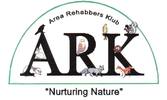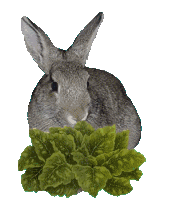Nuisance Wildlife
With all the progress today and land being taken away, some wildlife can become a problem or nuisance. By learning their behavior and habitat, you can find ways to live comfortably with wildlife. There are many books out now about coexisting with wildlife. One good book is "Wild Neighbors" by The Humane Society of the United States. You can call a licensed wildlife rehabilitator for suggestions and advice.
Bats In house:
In attic:
Beavers
Cottontail Rabbits Protecting flowers and vegetables:
Protecting trees and shrubs:
Nesting Sparrows, Starlings, and Pigeons
Nesting Songbirds Birds attacking people and pets – their way of protecting their young
Eastern Chipmunks
Coyotes
Deer
Groundhogs
Moles
Opossums
Raccoons In chimney:
In attics:
In gardens and around home:
Skunks
Squirrels
In attic:
In chimney:
Woodpeckers
Bats In house:
- turn off all lights and open doors and windows, cut on outside light
- some bats can squeeze through ¼ inch, after bats are gone seal all areas
In attic:
- install a one-way door made for bat exclusion on the last entrance site, then seal up when you know they are all gone (May – July are birthing times)
- use loud noises, bright lights or rags soaked in ammonia to coax the bats into leaving, seal when all are out (May – July are birthing times)
Beavers
- wrap tree trunks in hardware cloth approximately 4 feet high
- install metal fencing around the area
- install electric fencing 1 foot high
- add a 20-40 ft long, 8-12 inch pipe culvert through the dam
Cottontail Rabbits Protecting flowers and vegetables:
- put fencing 2 foot high around the area
- garden centers carry a variety of chemical repellents
Protecting trees and shrubs:
- wrap tree trunks at least 18 inches high with hardware cloth
- remove vegetation coverage
Nesting Sparrows, Starlings, and Pigeons
- use repellents such as noisemaking devices, visual stimuli, (life-like hawk/owl/snake replicas) until birds have moved their roosting spot
- install chicken wire laid in parallel rows on roosting surface
- remove all flat surfaces if possible
- Place a plastic Easter egg, rock, large shell, etc. in the center of your hanging baskets to discourage wrens from nesting in them.
Nesting Songbirds Birds attacking people and pets – their way of protecting their young
- avoid the area for the 3 weeks or so until the babies have left
- if you can't avoid the area, use an umbrella, wave cloth to scare birds away, etc.
Eastern Chipmunks
- remove hiding places, such as wood and rock
- if borrowing, bury hardware cloth in that area
Coyotes
- use ammonia in trash cans or empty trash each day
- keep livestock confined and penned
- use electric fencing
Deer
- repellants such as human hair in a stocking, different predator urines found in garden or sporting good shops, hanging mirrors, CD's, or tinfoil
- 8 foot fencing around the area
Groundhogs
- garden centers and feed stores sell repellents to discourage them
- seal all opening under porches and houses
- loud noises and ammonia placed near the dens will drive them away
Moles
- insect control is the biggest way to discourage moles, they eat grubs and other burrowing insects
- repellents found in garden centers
Opossums
- pick up outdoor pet food
- secure trash can lids
Raccoons In chimney:
- use ammonia or bag of mothballs to drive out of chimney
- ensure that all young are out afterwards (April – July are birthing times)
- after all are gone, cap chimney
In attics:
- put lights and loud noises (radio) up there for a few days (April – July are birthing times)
- make sure no young are left behind and seal entrance once gone
In gardens and around home:
- use scare tactics such as lights and loud noises
- secure all trash can lids and take up any outside pet food
Skunks
- secure garbage and outside pet food
- remove any wood or rock piles
- seal openings to crawl spaces under houses and porches
Squirrels
In attic:
- make loud noises (radio) and moth balls throughout attic
- once gone, check for young, seal all entrances (late January – November are birthing times)
- install 1-way exit devices
In chimney:
- hang 1/2 inch thick rope down chimney and attach at top so they can climb out
- put ammonia on rags and place in fireplace over flu
- once all have left, check for young and cap chimney (birthing is January – November)
Woodpeckers
- insects attract the woodpecker, treat for infestation
- hang tin pans, CD's, foil or something that will flutter to scare them
- muffle the sound of the drumming by placing rubber or like material on the area they are pecking




